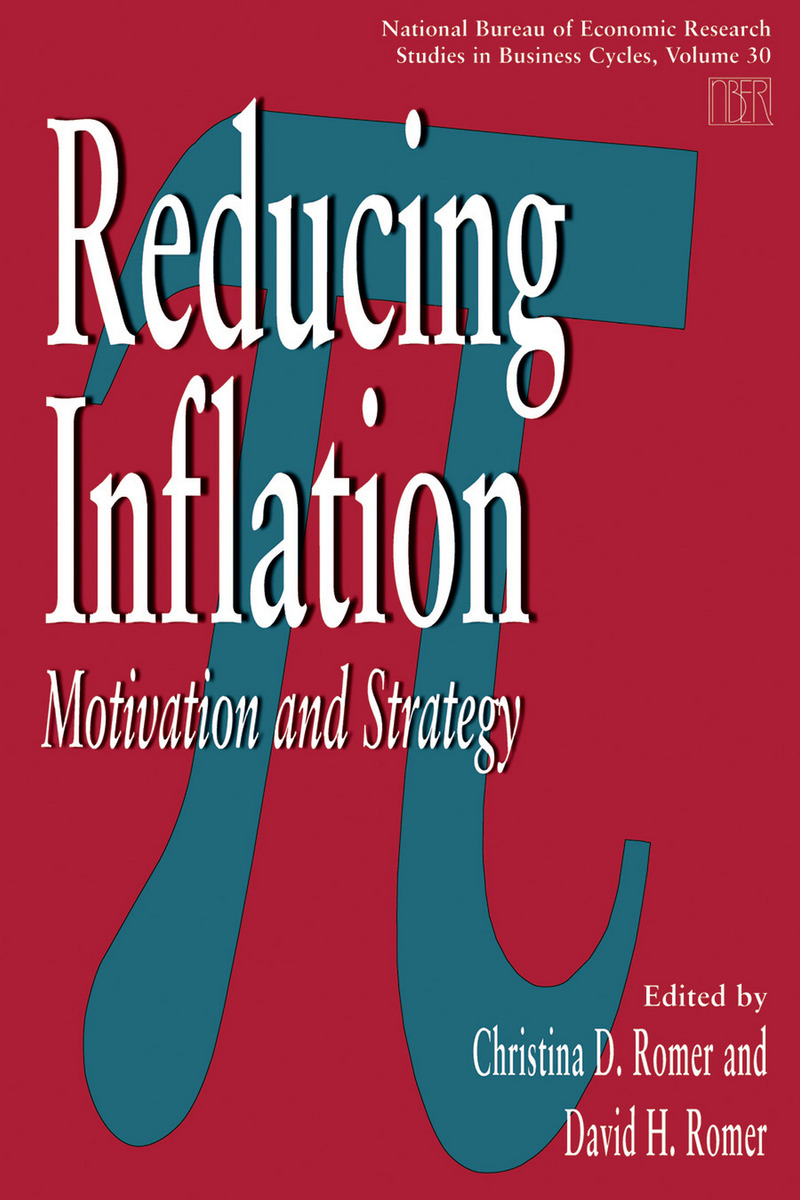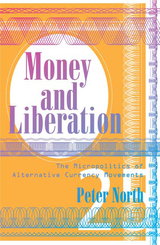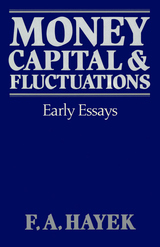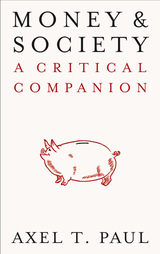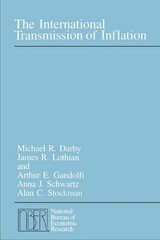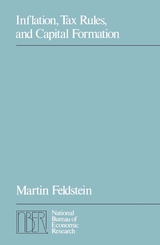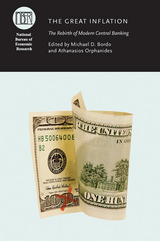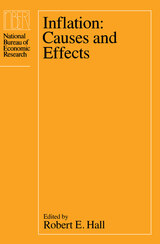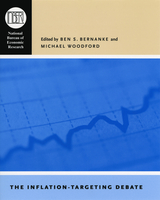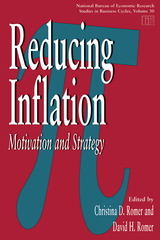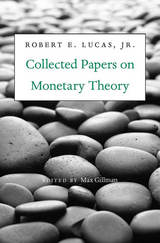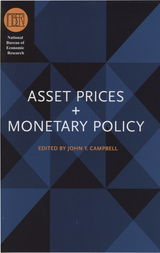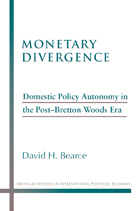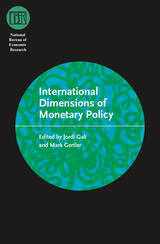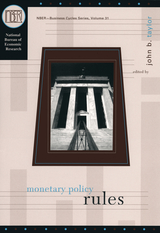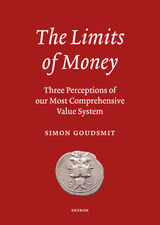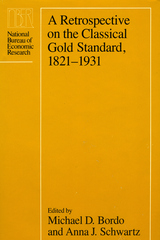Reducing Inflation: Motivation and Strategy
University of Chicago Press, 1997
eISBN: 978-0-226-72483-6 | Cloth: 978-0-226-72484-3
Library of Congress Classification HG229.R42 1997
Dewey Decimal Classification 332.41
eISBN: 978-0-226-72483-6 | Cloth: 978-0-226-72484-3
Library of Congress Classification HG229.R42 1997
Dewey Decimal Classification 332.41
ABOUT THIS BOOK | TOC | REQUEST ACCESSIBLE FILE
ABOUT THIS BOOK
While there is ample evidence that high inflation is harmful, little is known about how best to reduce inflation or how far it should be reduced. In this volume, sixteen distinguished economists analyze the appropriateness of low inflation as a goal for monetary policy and discuss possible strategies for reducing inflation.
Section I discusses the consequences of inflation. These papers analyze inflation's impact on the tax system, labor market flexibility, equilibrium unemployment, and the public's sense of well-being. Section II considers the obstacles facing central bankers in achieving low inflation. These papers study the precision of estimates of equilibrium unemployment, the sources of the high inflation of the 1970s, and the use of non-traditional indicators in policy formation. The papers in section III consider how institutions can be designed to promote successful monetary policy, and the importance of institutions to the performance of policy in the United States, Germany, and other countries.
This timely volume should be read by anyone who studies or conducts monetary policy.
Section I discusses the consequences of inflation. These papers analyze inflation's impact on the tax system, labor market flexibility, equilibrium unemployment, and the public's sense of well-being. Section II considers the obstacles facing central bankers in achieving low inflation. These papers study the precision of estimates of equilibrium unemployment, the sources of the high inflation of the 1970s, and the use of non-traditional indicators in policy formation. The papers in section III consider how institutions can be designed to promote successful monetary policy, and the importance of institutions to the performance of policy in the United States, Germany, and other countries.
This timely volume should be read by anyone who studies or conducts monetary policy.
See other books on: Inflation | Inflation (Finance) | Monetary policy | Motivation | Strategy
See other titles from University of Chicago Press
